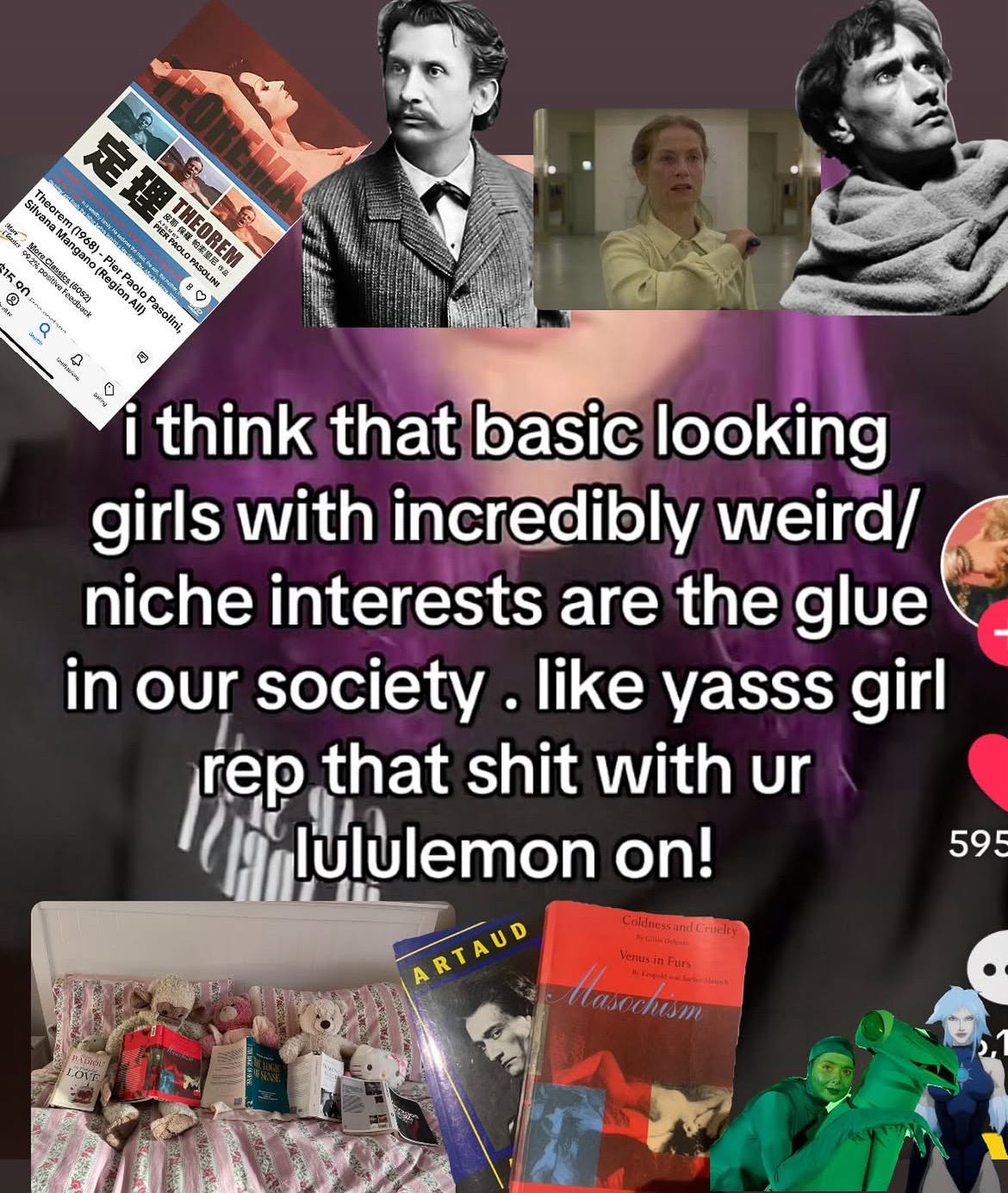Life is when gaps stick to you like ribs. The crack in the surface forms a glimpse through the gaps into the groundless ground which lies beneath; moments when you know the content is subdued by the container. When I watch the filler episodes of Twin Peaks, I’m not angry; filler episodes are how the form of television expresses itself not as discrete moments but rather a totality that is the world of the artwork. That’s why Nadine is the most important character, or maybe Lucy.
That’s why I don’t chastise myself for the doomscrolling, the days I don’t get out of bed, the days which roll past quickly without anything of note. In the past, I would have jumped into an indignant declaration of alterity to combat this. I was reminded of this recently.
Stassi Schroeder, a reality tv starlet from my favourite television show ever Vanderpump Rules, wrote a book which I haven’t read but would probably greatly enjoy about how to be a basic bitch. Stassi is probably one of the greatest offerings of reality TV not because she was particularly relatable, but because she was a sorceress of the spoken word (maybe others related to her, hence her basicness, but I always admired her for her mastery over language). However, the declaration of being basic I find particularly appealling at the moment.
In my teenage years, like many smart and bored girls in cities too small to be cool and too big to be kind, I considered myself a part of a subculture. I would go to local gigs most weekends and listen to alternative rap and ‘indie music’. However, this alternative JESSISONLINE, let’s call her JESSISONTHENET or JESSISONSHITTYMUSICMEMEACCOUNTINSTAGRAMWHERETHEYPOSTVAGUELYMISOGYNISTICMEMESINTHENAMEOFBEINGALTERNATIVEANDHAVINGATASTELEVELWHICHISACTUALLYABSENT, really didn’t know what she liked. The closest to actually liking things she came to was rap music and theatre. But she never really gave a shit about the bands she listened to, she liked the “scene” and the identity being the kind of girl who goes to seeing gigs. Returning to myself currently, I can see the misfortunes which led this teenage self to lapse or fall into me now (I only say “me now” for the sake of communicability, there is no JESSISONLINE PROPER now). For example, I now know that:
What is considered an “aesthetic” for a person, or conforming to “aesthetic” is a final step of subletting taste or aesthetic principles or judgement to identity. That is: the claim that one likes something is subsumed to the individual that likes, but not only that but media or art becomes irreconcilably fractured between the character of the maker and identity of the consumer. Artwork itself then takes the form of a gap or absence.
Taste and style become meaningless terms in these circumstances as they no longer refer to judgement or formal characteristics of one’s own art-making (and yes love and life can be an art-making) but rather are expressions of reactionary ressentiment usually grounded in a hatred of the “basic” (typically women).
To conclude my brief reflections today, I will end with some advice in response to these reflections:
Read one book you love for a year; take the time to love understand something, whether it is by taking it slow or reading it repetitively.
Learn the difference between taste and consumption: one is an engagement of the senses the other is simply eating and excreting.
Learn to love life as something not subordinated to identity. Learn to be in the gaps, because they show you the intrinsic value life holds within itself.
Typing all this on a phone made me feel as if I was typing a rage text through a cracked screen protector, like the one I had on my old phone. I liked the cracks in the screen because it felt like the light of the phone shone through better when it had a broken veil. I appreciate the vessel that carries.





